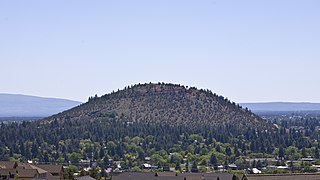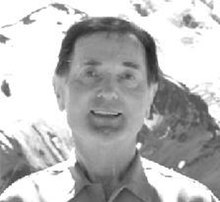The Book of Amos is the third of the Twelve Minor Prophets in the Old Testament (Tanakh) and the second in the Greek Septuagint tradition. According to the Bible, Amos was an older contemporary of Hosea and Isaiah, and was active c. 750 BC during the reign of Jeroboam II of Samaria, while Uzziah was King of Judah. Amos is said to have lived in the kingdom of Judah but preached in the northern Kingdom of Israel with themes of social justice, God's omnipotence, and divine judgment became staples of prophecy. In recent years, scholars have grown more skeptical of The Book of Amos’ presentation of Amos’ biography and background. It is known for its distinct “sinister tone and violent portrayal of God.”

The Bible is a collection of religious texts or scriptures, some, all, or a variant of which, are held to be sacred in Christianity, Judaism, Samaritanism, Islam, the Baha'i Faith, and many other Abrahamic religions. The Bible is an anthology, a compilation of texts of a variety of forms, originally written in Hebrew, Aramaic, and Koine Greek. These texts include instructions, stories, poetry, and prophecies, and other genres. The collection of materials that are accepted as part of the Bible by a particular religious tradition or community is called a biblical canon. Believers in the Bible generally consider it to be a product of divine inspiration, but the way they understand what that means and interpret the text varies.

Esther is the eponymous heroine of the Book of Esther. The story the book tells is as follows: Ahasuerus, the king of the Persian Achaemenid Empire, falls in love with the beautiful Jewish woman Esther and makes her his Queen. His grand vizier, Haman, is offended by Esther's cousin and guardian, Mordecai, who refuses to prostrate himself before Haman. Haman plots to have all the Jews in Persia killed, and convinces Ahasuerus to permit him to do so. However, Esther foils the plan by revealing Haman's eradication plans to Ahasuerus, who then has Haman executed and grants permission to the Jews to kill their enemies.
The New Testament (NT) is the second division of the Christian biblical canon. It discusses the teachings and person of Jesus, as well as events relating to first-century Christianity. The New Testament's background, the first division of the Christian Bible, is called the Old Testament, which is based primarily upon the Hebrew Bible; together they are regarded as sacred scripture by Christians.
The Old Testament (OT) is the first division of the Christian biblical canon, which is based primarily upon the 24 books of the Hebrew Bible, or Tanakh, a collection of ancient religious Hebrew and occasionally Aramaic writings by the Israelites. The second division of Christian Bibles is the New Testament, written in Koine Greek.

Mount Shasta is a potentially active volcano at the southern end of the Cascade Range in Siskiyou County, California. At an elevation of 14,179 feet, it is the second-highest peak in the Cascades and the fifth-highest in the state. Mount Shasta has an estimated volume of 85 cubic miles, which makes it the most voluminous stratovolcano in the Cascade Volcanic Arc. The mountain and surrounding area are part of the Shasta–Trinity National Forest.

Noah's Ark is the ship in the Genesis flood narrative through which God spares Noah, his family, and examples of all the world's animals from a global deluge. The story in Genesis is based on earlier flood myths originating in Mesopotamia, and is repeated, with variations, in the Quran, where the Ark appears as Safinat Nūḥ and al-fulk. The myth of the global flood that destroys all life begins to appear in the Old Babylonian Empire period. The version closest to the biblical story of Noah, as well as its most likely source, is that of Utnapishtim in the Epic of Gilgamesh.

Babylon the Great, commonly known as the Whore of Babylon, refers to both a symbolic female figure and a place of evil as mentioned in the Book of Revelation of the New Testament. Her full title is stated in Revelation 17:5 as "Mystery, Babylon the Great, the Mother of Harlots and Abominations of the Earth".
The oldest surviving Hebrew Bible manuscripts, the Dead Sea Scrolls, date to c. the 2nd century BCE. Some of these scrolls are presently stored at the Shrine of the Book in Jerusalem. The oldest text of the entire Bible, including the New Testament, is the Codex Sinaiticus dating from the 4th century CE, with its Old Testament a copy of a Greek translation known as the Septuagint. The oldest extant manuscripts of the vocalized Masoretic Text date to the 9th century CE. With the exception of a few biblical sections in the Nevi'im, virtually no biblical text is contemporaneous with the events it describes.

Mount Bachelor, formerly named Bachelor Butte, is a dormant stratovolcano atop a shield volcano in the Cascade Volcanic Arc and the Cascade Range of central Oregon. Named Mount Bachelor because it stands apart from the nearby Three Sisters, it lies in the eastern segment of the central portion of the High Cascades, the eastern segment of the Cascade Range. The volcano lies at the northern end of the 15-mile (24 km) long Mount Bachelor Volcanic Chain, which underwent four major eruptive episodes during the Pleistocene and the Holocene. The United States Geological Survey considers Mount Bachelor a moderate threat, but Bachelor poses little threat of becoming an active volcano in the near future. It remains unclear whether the volcano is extinct or just inactive.
Reuel or Raguel, meaning "God shall pasture" or more specifically "El shall pasture" is a Hebrew name associated with several biblical and religious figures.
Mount Multnomah is an invalidated hypothetical ancient volcano postulated in a 1925 publication by geologist Edwin T. Hodge. It was proposed to exist in central Oregon at the present day location of the Three Sisters region. It was estimated to have been around 16,000-foot (4,900 m) tall, and was believed destroyed in a fashion similar to Mount Mazama's eruption resulting in what is now Crater Lake in southern Oregon.

Pilot Butte is a lava dome that was created from an extinct volcano located in Bend, Oregon. It is a cinder cone butte which rises nearly 500 feet (150 m) above the surrounding plains. Bend is one of six cities in the United States to have a volcano within its boundaries. The other examples are Mount Tabor in Portland, Oregon, Jackson Volcano in Jackson, Mississippi, Diamond Head in Honolulu, Glassford Hill in Prescott Valley and Pilot Knob in Austin, Texas.
Harold William Attridge is an American New Testament scholar and historian of Christianity known for his work in New Testament exegesis, especially the Epistle to the Hebrews, the study of Hellenistic Judaism, and the history of early Christianity. He is a Sterling Professor of Divinity at Yale University, where he served as Dean of the Divinity School from 2002 to 2012, the first Roman Catholic to head that historically Protestant school.

Frank Moore Cross Jr. (1921–2012) was the Hancock Professor of Hebrew and Other Oriental Languages Emeritus at Harvard University, notable for his work in the interpretation of the Dead Sea Scrolls, his 1973 magnum opusCanaanite Myth and Hebrew Epic, and his work in Northwest Semitic epigraphy. Many of his essays on the latter topic have since been collected in Leaves from an Epigrapher's Notebook.
Robert Laird Harris was a Presbyterian minister, church leader, and Old Testament scholar.
There is much disagreement within biblical scholarship today over the authorship of the Bible. The majority of scholars believe that most of the books of the Bible are the work of multiple authors and that all have been edited to produce the works known today. The following article outlines the conclusions of the majority of contemporary scholars, along with the traditional views, both Jewish and Christian.

Grant R. Osborne was an American theologian and New Testament scholar. He was Professor of New Testament at Trinity Evangelical Divinity School.
The authorship of the Petrine epistles is an important question in biblical criticism, parallel to that of the authorship of the Pauline epistles, since scholars have long sought to determine who were the exact authors of the New Testament letters. Most scholars today conclude that Peter the Apostle was not the author of the two epistles that are attributed to him and that they were written by two different authors.
The Tumalo volcanic center of Central Oregon is viewed as a source of large-volume Pleistocene ashflows, in the US state of Oregon.









